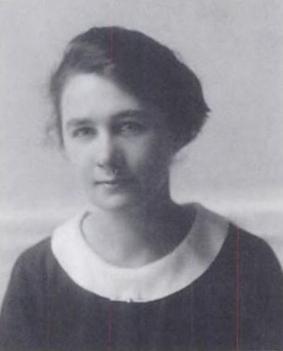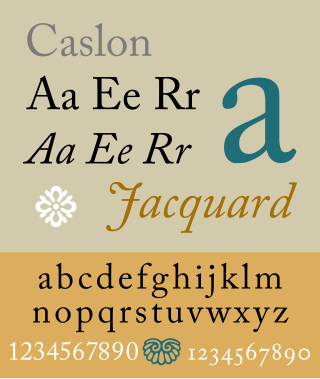
EzhEZH, also called the "tailed z", is a letter, notable for its use in the International Phonetic Alphabet (IPA) to represent the voiced postalveolar fricative consonant. This sound, sometimes transcribed /zh/, occurs in the pronunciation of ⟨si⟩ in vision and precision, the ⟨s⟩ in treasure, and the ⟨g⟩ in beige.
The voiced bilabial nasal is a type of consonantal sound which has been observed to occur in about 96% of spoken languages. The symbol in the International Phonetic Alphabet that represents this sound is ⟨m⟩, and the equivalent X-SAMPA symbol is m. The bilabial nasal occurs in English, and it is the sound represented by "m" in map and rum. Very few languages are known to lack this sound. A small number of languages have been observed to lack independent nasal phonemes altogether, such as Quileute, Makah, and Central Rotokas.
The voiced postalveolar or palato-alveolar fricative is a type of consonantal sound used in some spoken languages. The International Phonetic Association uses the term voiced postalveolar fricative only for the sound, but it also describes the voiced postalveolar non-sibilant fricative, for which there are significant perceptual differences, as one is a sibilant and one is not.
The voiceless dental non-sibilant fricative is a type of consonantal sound used in some spoken languages. It is familiar to most English speakers as the 'th' in think. Though rather rare as a phoneme among the world's languages, it is encountered in some of the most widespread and influential ones. The symbol in the International Phonetic Alphabet that represents this sound is ⟨θ⟩, and the equivalent X-SAMPA symbol is T. The IPA symbol is the lowercase Greek letter theta, which is used for this sound in post-classical Greek, and the sound is thus often referred to as "theta".
The voiceless labiodental fricative is a type of consonantal sound used in a number of spoken languages. The symbol in the International Phonetic Alphabet that represents this sound is ⟨f⟩.

The close central unrounded vowel, or high central unrounded vowel, is a type of vowel sound used in some languages. The symbol in the International Phonetic Alphabet that represents this sound is ⟨ɨ⟩, namely the lower-case letter i with a horizontal bar. Both the symbol and the sound are commonly referred to as barred i.

The close-mid back rounded vowel, or high-mid back rounded vowel, is a type of vowel sound used in some spoken languages. The symbol in the International Phonetic Alphabet that represents this sound is ⟨o⟩.

The open-mid back rounded vowel, or low-mid back rounded vowel, is a type of vowel sound, used in some spoken languages. The symbol in the International Phonetic Alphabet that represents this sound is ⟨ɔ⟩. The IPA symbol is a turned letter c and both the symbol and the sound are commonly called "open-o". The name open-o represents the sound, in that it is like the sound represented by ⟨o⟩, the close-mid back rounded vowel, except it is more open. It also represents the symbol, which can be remembered as an o which has been "opened" by removing part of the closed circular shape.
In phonetics, vowel roundedness is the amount of rounding in the lips during the articulation of a vowel. It is labialization of a vowel. When a rounded vowel is pronounced, the lips form a circular opening, and unrounded vowels are pronounced with the lips relaxed. In most languages, front vowels tend to be unrounded, and back vowels tend to be rounded. However, some languages, such as French, German and Icelandic, distinguish rounded and unrounded front vowels of the same height, and Vietnamese distinguishes rounded and unrounded back vowels of the same height. Alekano has only unrounded vowels. In the International Phonetic Alphabet vowel chart, rounded vowels are the ones that appear on the right in each pair of vowels. There are also diacritics, U+0339◌̹COMBINING RIGHT HALF RING BELOW and U+031C◌̜COMBINING LEFT HALF RING BELOW, to indicate greater and lesser degrees of rounding, respectively. Thus has less rounding than cardinal, and has more. These diacritics can also be used with unrounded vowels: is more spread than cardinal, and is less spread than cardinal.

Egyptian Arabic, locally known as Colloquial Egyptian, or simply Masri (مَصرى), is the most widely spoken vernacular Arabic variety in Egypt. It is part of the Afro-Asiatic language family, and originated in the Nile Delta in Lower Egypt. The estimated 100 million Egyptians speak a continuum of dialects, among which Cairene is the most prominent. It is also understood across most of the Arabic-speaking countries due to broad Egyptian influence in the region, including through Egyptian cinema and Egyptian music. These factors help to make it the most widely spoken and by far the most widely studied variety of Arabic.
Linguolabials or apicolabials are consonants articulated by placing the tongue tip or blade against the upper lip, which is drawn downward to meet the tongue. They represent one extreme of a coronal articulatory continuum which extends from linguolabial to subapical palatal places of articulation. Cross-linguistically, linguolabial consonants are very rare. They are found in a cluster of languages in Vanuatu, in the Kajoko dialect of Bijago in Guinea-Bissau, in Umotína, and as paralinguistic sounds elsewhere. They are also relatively common in disordered speech, and the diacritic is specifically provided for in the extensions to the IPA.
Americanist phonetic notation, also known as the North American Phonetic Alphabet (NAPA), the Americanist Phonetic Alphabet or the American Phonetic Alphabet (APA), is a system of phonetic notation originally developed by European and American anthropologists and language scientists for the phonetic and phonemic transcription of indigenous languages of the Americas and for languages of Europe. It is still commonly used by linguists working on, among others, Slavic, Uralic, Semitic languages and for the languages of the Caucasus, of India, and of much of Africa; however, Uralicists commonly use a variant known as the Uralic Phonetic Alphabet.
The International Phonetic Alphabet (IPA) requires specific names for the symbols and diacritics used in the alphabet.
The International Phonetic Alphabet (IPA) possesses a variety of obsolete and nonstandard symbols. Throughout the history of the IPA, characters representing phonetic values have been modified or completely replaced. An example is ⟨ɷ⟩ for standard. Several symbols indicating secondary articulation have been dropped altogether, with the idea that they should be indicated with diacritics: for is one. In addition, the rare voiceless implosive series has been dropped.
The Gujarati language is an Indo-Aryan language native to the Indian state of Gujarat. Much of its phonology is derived from Sanskrit.

Varieties of Arabic are the linguistic systems that Arabic speakers speak natively. Arabic is a Semitic language within the Afroasiatic family that originated in the Arabian Peninsula. There are considerable variations from region to region, with degrees of mutual intelligibility that are often related to geographical distance and some that are mutually unintelligible. Many aspects of the variability attested to in these modern variants can be found in the ancient Arabic dialects in the peninsula. Likewise, many of the features that characterize the various modern variants can be attributed to the original settler dialects as well as local native languages and dialects. Some organizations, such as SIL International, consider these approximately 30 different varieties to be separate languages, while others, such as the Library of Congress, consider them all to be dialects of Arabic.
Sak is a Sino-Tibetan language of the Sal branch spoken in Bangladesh and Myanmar by the Chak people.
The World Orthography (WO) is an alphabet and transcription system based on the Africa Alphabet and the International Phonetic Alphabet. In Daniel Jones’s 1948 Difference between Spoken and Written Language, an adaptation of WO for English is given with the letters a b c d ð e ə f g h i j k l m n ŋ o p r s ʃ t θ u v w x y z ʒ. The capitals of ð, ə, ŋ, ʃ, θ, and ʒ are: Ð, Ə, Ŋ, Ʃ, Θ, and straight-bottomed Ʒ.

Lilias Eveline Armstrong was an English phonetician. She worked at University College London, where she attained the rank of reader. Armstrong is most known for her work on English intonation as well as the phonetics and tone of Somali and Kikuyu. Her book on English intonation, written with Ida C. Ward, was in print for 50 years. Armstrong also provided some of the first detailed descriptions of tone in Somali and Kikuyu.

In the days of printing with metal type sorts, it was common to rotate letters and digits 180° to create new symbols. This was a cheap way to extend the alphabet that didn't require purchasing or cutting custom sorts. The method was used for example with the Palaeotype alphabet, the International Phonetic Alphabet, the Fraser script, and for some mathematical symbols. Perhaps the earliest instance of this that is still in use is turned e for schwa.








